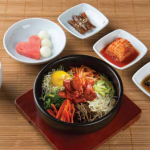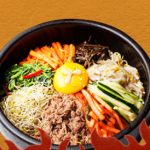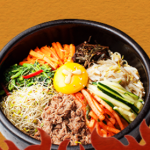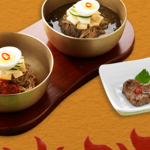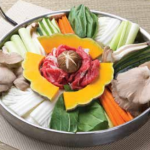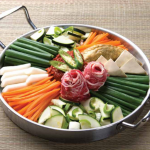Introduction
Welcome, fellow food enthusiasts! Today, we embark on a spicy adventure as we dive into the realm of culinary delights from different cultures, exploring the spiciness levels of Korean cuisine compared to other international flavors. From tongue-tingling sizzles to mouthwatering sweat-inducing heat, let’s unravel the mysteries behind the spice!
Body
The Picante Palette of Korean Cuisine
Korean cuisine is renowned for its bold flavors and masterful use of spices. From the famous kimchi to the fiery gochujang sauce, Korean dishes offer a unique heat that leaves an unforgettable impression on your taste buds. The spiciness in Korean fare originates from the prolific use of gochugaru, a coarsely ground red pepper powder that infuses dishes with its distinct heat and smokiness.
Be it the iconic bibimbap, the comforting kimchi jjigae, or the addictive tteokbokki, Korean dishes encompass a wide range of spice levels. Some dishes, like kimchi, offer a gentle, tangy heat perfect for introducing newcomers to the world of spiciness. Others, like the blistering kimchi stew, deliver mouthfuls of fiery pleasure that will undoubtedly make even the bravest eater break a sweat.
A Comparison of International Spiciness
Now, let’s explore how the spiciness level in Korean cuisine measures up to other international flavors that have ignited taste buds worldwide.
1. Thai Cuisine: The Fiery Land of Chilies
Traditional Thai cuisine takes the crown when it comes to fiery spice. Thai dishes boast an impressive variety of chili peppers, including the infamous bird’s eye chili. From the iconic green curry to the notorious Tom Yum soup, Thai cuisine offers a scorching experience that can make you reach for that glass of water in record time. In the battle of spice, Thai takes it up a notch compared to Korean dishes.
2. Indian Cuisine: The Spice Symphony
Indian cuisine is revered for its intricate blend of spices. Each dish is a harmonious symphony of flavors, utilizing a plethora of spices such as cumin, coriander, turmeric, and more. While Indian cuisine showcases a rainbow of flavors, it also offers some fiery delights. Dishes like vindaloo or fiery chicken curry can leave you feeling the heat for hours. In this spicy showdown, Indian cuisine dances on par with Korean flavors.
3. Mexican Cuisine: From Mild to Wild
Cue the mariachi band! Mexican cuisine offers much more than just the zesty tang of lime or the warmth of freshly made tortillas. Mexican dishes like the fiery salsa verde, savory mole sauce, or the notorious habanero peppers bring immense heat to the table. From mild to wild, Mexican flavors encompass a wide spectrum of spiciness, with some dishes even challenging the heat of Korean cuisine.
4. Malaysian Cuisine: The Chilli-Infused Melting Pot
Ah, Malaysia! Known for its cultural diversity and culinary prowess, Malaysian cuisine packs a flavorful punch. Influenced by Malay, Chinese, and Indian cuisines, Malaysian dishes take the best of each culture and bring the heat. Whether it’s the sambal belacan that accompanies Nasi Lemak or the tongue-tingling spice of curry laksa, Malaysian cuisine holds its own in the spice department. Yet, Korean cuisine still manages to outshine Malaysian flavors in terms of overall spiciness.
Conclusion
In the realm of spiciness, Korean cuisine proudly stands toe-to-toe with other international flavors. With its unique blend of gochugaru, Korean dishes offer a distinctive heat that captivates palates worldwide. While Thai cuisine reigns supreme in fiery taste, Korean dishes, alongside Indian, Mexican, and Malaysian flavors, introduce a spicy symphony that invites adventure and tantalizes taste buds.
So, spice lovers, embrace the heat and embark on a gastronomic journey as you delve into the captivating spiciness of Korean cuisine and beyond!
FAQ (Frequently Asked Questions)
- Are all Korean dishes extremely spicy?
-
No, not all Korean dishes are extremely spicy. Some offer a milder heat, while others provide a fiery kick. It depends on the specific dish and its ingredients.
-
Can I request to make Korean dishes less spicy?
-
Absolutely! Many Korean restaurants are more than happy to accommodate your spice preferences. Simply let the staff know that you prefer a milder version, and they will adjust the spiciness accordingly.
-
Is there a way to reduce the spiciness of Korean dishes when cooking at home?
-
Yes! You can control the spiciness level when cooking Korean dishes at home. Reduce the amount of gochugaru (red pepper powder) or replace it with a milder chili powder if desired. Additionally, you can add a sweet or creamy element like honey or yogurt to balance the spiciness.
-
Are there any health benefits to eating spicy food?
-
Yes, there are several potential health benefits associated with eating spicy food. Spicy ingredients like chili peppers can boost metabolism, aid digestion, and provide pain relief. However, individual reactions to spice may vary, so it’s always best to listen to your body.
-
What if I can’t handle spicy food at all? Is Korean cuisine still suitable for me?
- Of course! While Korean cuisine is known for its spiciness, there are plenty of non-spicy options available. From mild soups like doenjang jjigae to savory pancakes like pajeon, there’s something for everyone’s taste buds.
And there you have it! Hopefully, this spicy journey has enlightened you on the spiciness levels of Korean cuisine compared to other international flavors. Embrace the heat, savor the flavor, and embark on a thrilling culinary adventure that will ignite your taste buds. Let’s dive in and enjoy the fiery delights from around the globe!

